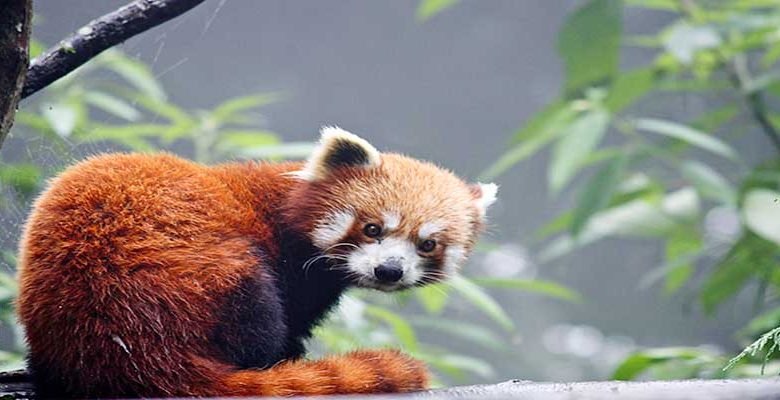Arunachal: Endangered Red Panda spotted in Tawang
Perhaps this is for the first time a red panda has been spotted in the border district of the northeastern state.

TAWANG- A little Red Panda, listed as endangered in the International Union for Conservation of Nature list of threatened species, has been spotted at Tawang in Arunachal Pradesh, Chief Minister Pema Khandu said on Wednesday, PTI reported.
Perhaps this is for the first time a red panda has been spotted in the border district of the northeastern state.
“Cute and little #RedPanda spotted in Tawang! The small mammal is listed as endangered in the International Union for Conservation of Nature list of threatened species.
Watch Video: Travel to Tawang of Arunachal Pradesh
“These bamboo-munching species mostly reside in Himalayan regions of the Northeast. Let us together protect them. They are important to safeguard biodiversity and maintain ecological integrity,” Khandu tweeted along with a video of the mammal.
Cute and little #RedPanda 🐼 spotted in Tawang!
The small mammal is listed as endangered in the International Union for Conservation of Nature list of threatened species.
These bamboo-munching species mostly reside in Himalayan regions of Northeast. Let us together protect… pic.twitter.com/h2RGbSvpwy
— Pema Khandu པདྨ་མཁའ་འགྲོ་། (@PemaKhanduBJP) May 23, 2023
According to the World Wildlife Fund website, the red panda is slightly larger than a domestic cat, with a bear-like body and thick russet fur. The belly and limbs are black and there are white markings on the side of the head and above its small eyes.
Red pandas are very skilful and acrobatic animals that predominantly stay in trees.
It is the state animal of Sikkim which hosts the Red Panda Festival every year. The winter event features parades, live music and draws tourists and locals alike.
Arunachal: Watch Tawang’s History
Almost 50 per cent of the red panda’s habitat is in the Eastern Himalayas.
They use their long, bushy tails for balance and to cover themselves in winter, presumably for warmth.
Primarily an herbivore, the name panda is said to come from the Nepali word ‘ponya,’ which means bamboo or plant-eating animal.
The GPS data showed that the red pandas “partitioned their activity patterns” by avoiding risky areas, such as roads. When they did cross the latter, they often broke with their normal sleeping patterns and crossed during the day.












